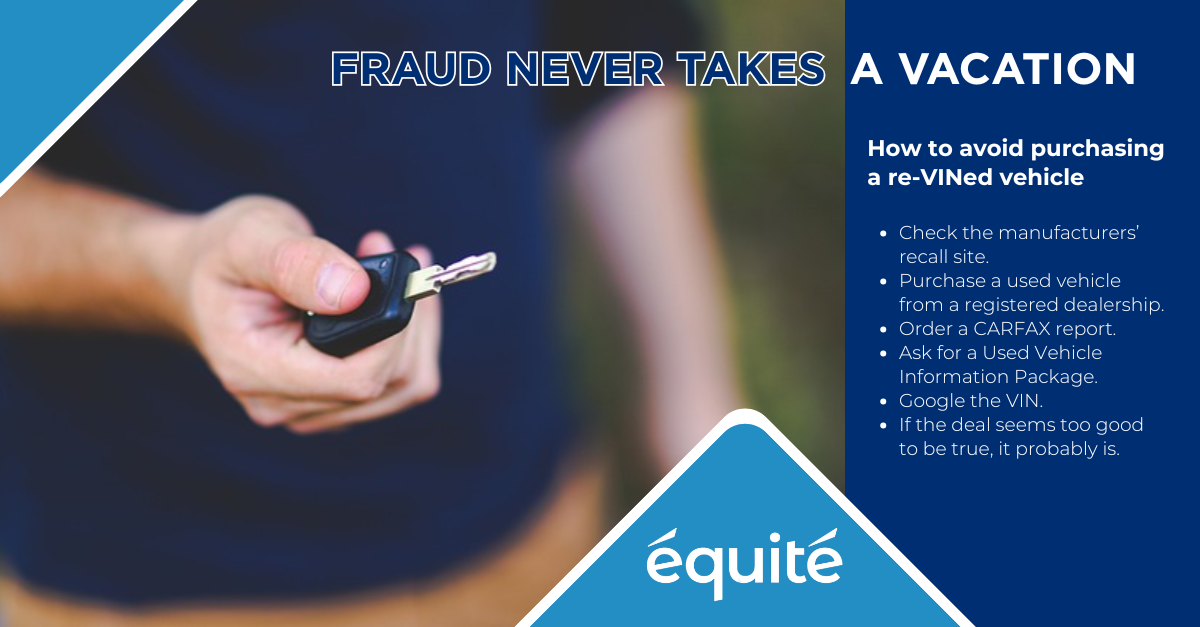

Fraud never takes a vacation, which is why this summer Équité Association is raising awareness about emerging insurance fraud trends. Équité’s 2025 First Half Auto Theft Trend Report revealed that criminals continue to evolve their tactics to identify new funding opportunities in vehicle crime; resulting in 44% of private passenger vehicles stolen this year nationally unrecovered. Fraud always has a victim, through this awareness campaign, Équité and its property and casualty members, are helping to fight against insurance fraud and keep Canadians safe.
What Does re-VIN mean?
Every manufactured vehicle is provided a unique vehicle identification number (VIN). This VIN stays with the vehicle throughout its lifetime, and the number can track recalls, insurance registration and the history of the vehicle. Re-VINing is when criminals alter the original VIN to conceal the vehicle’s identity in order to sell them to unsuspecting customers.
Re-VIN Fraud Explained
As auto theft became more difficult thanks to Public Safety Canada’s National Action Plan on Combatting Auto Theft, including over $200 million investments from the federal government, Équité investigators are seeing thieves move to other types of auto crime, including re-VIN fraud. Re-VIN fraud can occur in different ways, including:
How to Avoid Purchasing a Re-VINed Vehicle
What is being done to prevent re-VIN fraud?
On behalf of its insurance industry members, Équité:
Combatting Insurance Fraud
On behalf of Canadian property and casualty insurers, Équité combats insurance crime by deploying advanced analytics, intelligence best practices, and coordinated investigations. Follow this campaign and future awareness articles on LinkedIn, @Équité Association and equiteassociation.com. To report information about insurance crime by phone (available 24/7), please call 1-877-422-TIPS (English) or 1-866-422-4331 (service en français). If you would like to remain anonymous, please call our partners at Crime Stoppers (available 24/7) at 1-800-222-TIPS.